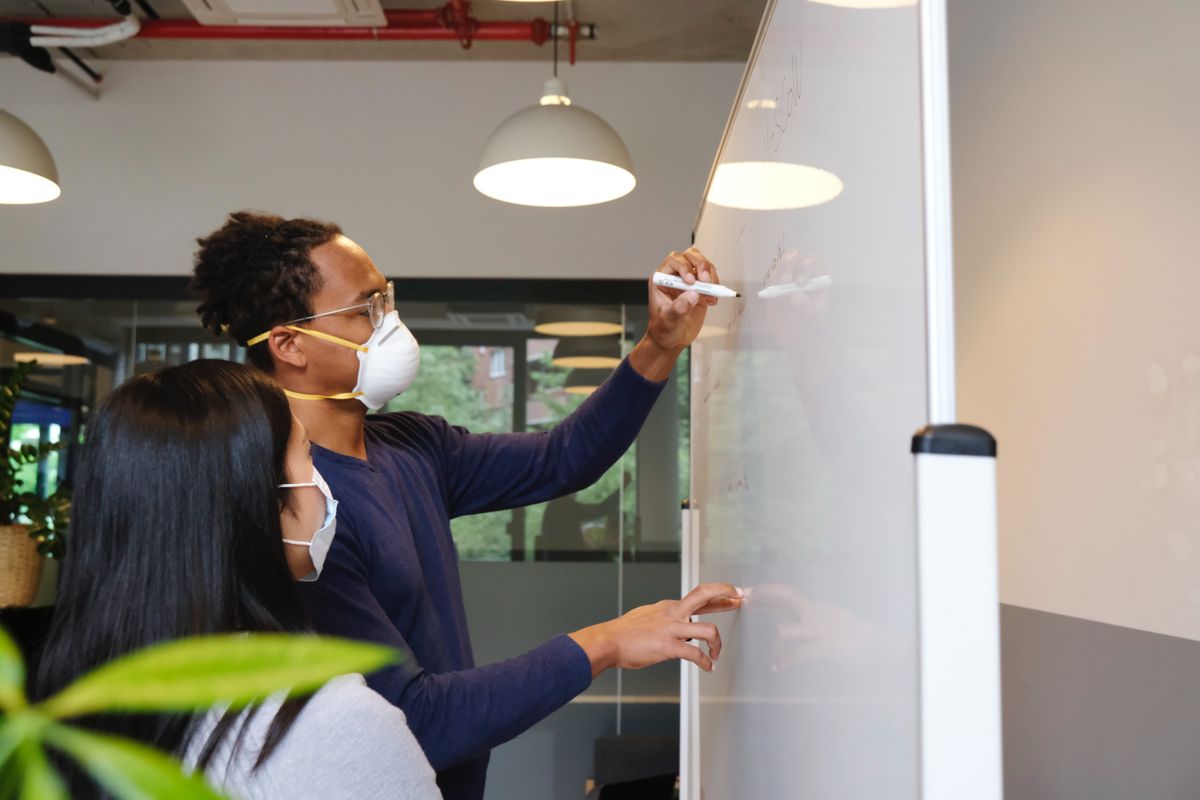5 Things to Keep in Mind as Companies Get Back to Office
Here are some post-COVID-19 office reopening guidelines and tips to keep in mind as your organisation transitions back to a physical or hybrid workplace.

The pandemic struck us all like a bolt of lightning. For businesses, the sudden lockdowns led to hurried closures and a hasty shift to remote work. Today, fortunately, we are in a very different position. Employers have had plenty of time to plan and prepare their office reopening strategy, and many have already begun to call people to the workplace on a rotational basis, or on specific days of the week. However, given the experiences of the past 20 months, one cannot be too careful. Here are some things company managements should bear in mind as they plan to reopen their offices.
Sustain the safety momentum
The virus may no longer be the threat it once was, but the lessons it has taught us about safety must endure in the long term. Businesses need to make sure that there is no relaxation in the implementation of safety measures once offices reopen. We’re not just talking about putting hand-washing reminders near washroom sinks or checking at the gates whether people are wearing their masks. Safety needs to be embedded in every process.
When unused buildings are opened after a long period of time, it’s important to check the physical environment thoroughly for health problems, especially for protecting people with weakened immune systems. One study found that stagnant water in unused buildings can harbour disease-causing pathogens or heavy metals. Ensure that the office and its immediate surroundings are free from mould, bacteria, garbage, and other health threats. Be vigilant about predicting and controlling every safety risk that could affect employee health and stay in touch with local authorities to proactively track and manage seasonal risks.
Reward the right behaviours
The responsibility for ensuring safety needs to be shared by both employers and employees. It’s not possible for you to keep track of every employee’s actions, but you can constantly remind people of the correct behaviours and reward those who set the right example.
For example, this could be done in the form of a reward programme for wellbeing champions. These champions would be people who do the right thing even when no one’s watching: for instance, sanitising their hands when returning indoors; maintaining a safe distance from external visitors such as delivery executives; or refusing to come in to work if they have flu-like symptoms. Recognising and rewarding these small actions has a positive effect on overall attitudes towards safety within the workplace.
Simultaneously, leaders too need to embody the new attitude towards safety at every step so that people don’t feel that there are two sets of rules in the same office.
Reimagine how work is done
No two workplaces are alike, and therefore the vision of the post-pandemic office too will vary, depending on various factors. In certain sectors, it’s easier to have distributed or remote workforces; in others, it’s harder. But one thing is clear: the future workplace will be more about skill sets and expertise, and less about keeping seats warm in the office.
Therefore, employers need to base their reopening policies (and the future of their workplace) on considerations such as:
- Where your employees live and how they commute,
- The extent to which safety measures like distancing can be adhered to in office,
- Whether productivity can be maintained with staggered work-days or shifts,
- Where your own employees feel happiest and productive,
- The effect of reopening on the work-life balance of workers.
Asking yourself the above questions will help you determine the best route forward. For instance, if your employees feel their productive best in a hybrid office system, it may be worth the investment to change your HR policies around attendance, performance appraisals, or goal-setting to reflect the new reality. You may also consider moving some jobs to specialists or off-roll consultants who don’t need to be physically present at the office.
Try Manah's free emotional wellbeing assessment now!
Work doubly hard on culture
Culture was one of the casualties during the pandemic. The long work hours, and the lack of in-person meetings, casual interactions, and mentoring opportunities have all contributed to the fraying of relationships between employees and employers. And it’s unreasonable to expect that it will reset on its own as soon as people come back to work. This is why companies need to work on rebuilding company culture.
The period after reopening is a great time to double down on company values. Re-communicate the behaviours and attitudes that are in line with these values, and make sure that the company itself is seen to be following those values – whether it is transparency, good communication, inclusivity, fairness, or anything else.
Second, fix any challenges to existing culture that hinder psychological safety. People feel psychologically safe when they have the freedom to voice their thoughts without judgement or penalties. This freedom must be built into policies. Showing respect and empathy should be encouraged, and examples of negative behaviour like bullying or insensitivity should be firmly discouraged. Invest in creating a more humane culture.
Listen to your people
Your people are your best source of ideas and suggestions when it comes to reopening safely. It’s important to speak to them and find out the things that really make a difference to the workforce, beyond just the standard safety checklists.
For instance, if someone feels anxious about potential infection after coming in to work – e.g., employees with elderly parents or small children – try and provide them with a flexible work option until they do feel more comfortable. Similarly, if the majority of your employees don’t feel that the Mediclaim policy adequately covers their health needs, you can speak to your insurance partner to offer an upgrade option. Other employees may feel more confident in using company-sponsored transport to commute than public buses or trains. If this is feasible and helps a large enough number of employees, you can consider it. The idea is to make sure that your employees feel like stakeholders in the reopening strategy.
The final thing to remember is that nothing is predictable or guaranteed. So even as you have a reopening strategy, have a re-closing policy as well, to make sure that if there is to be another transition to remote work, it will be a smoother experience than the first time around.



